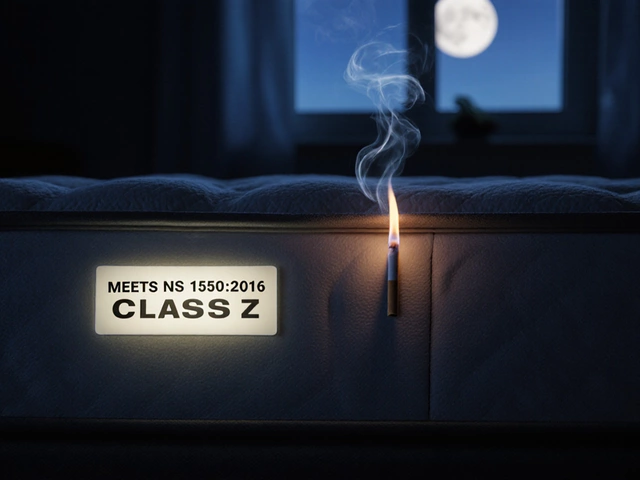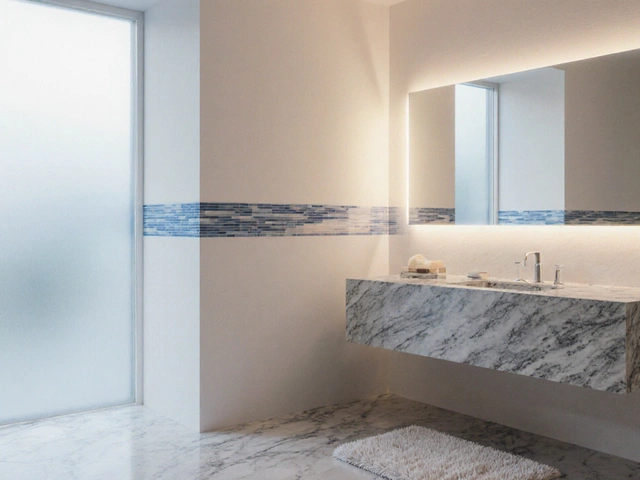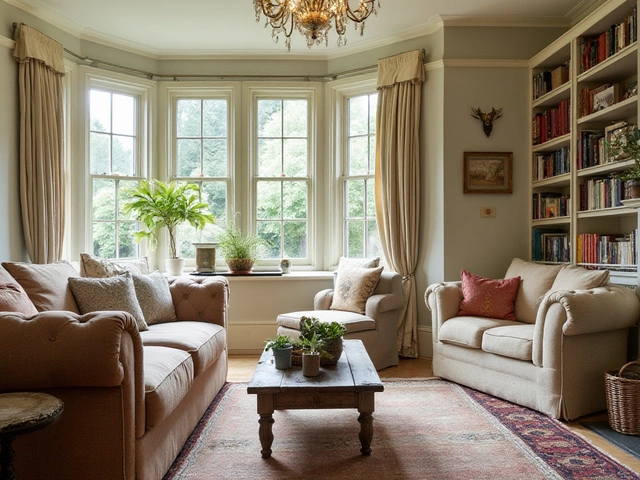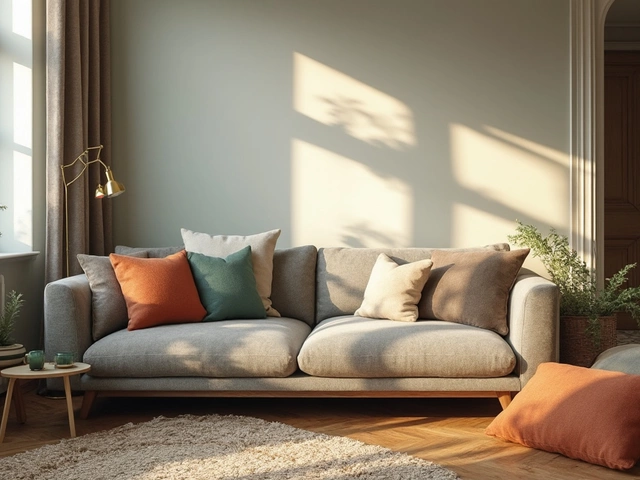Three Types of Mirrors: Plane, Concave, and Convex Explained
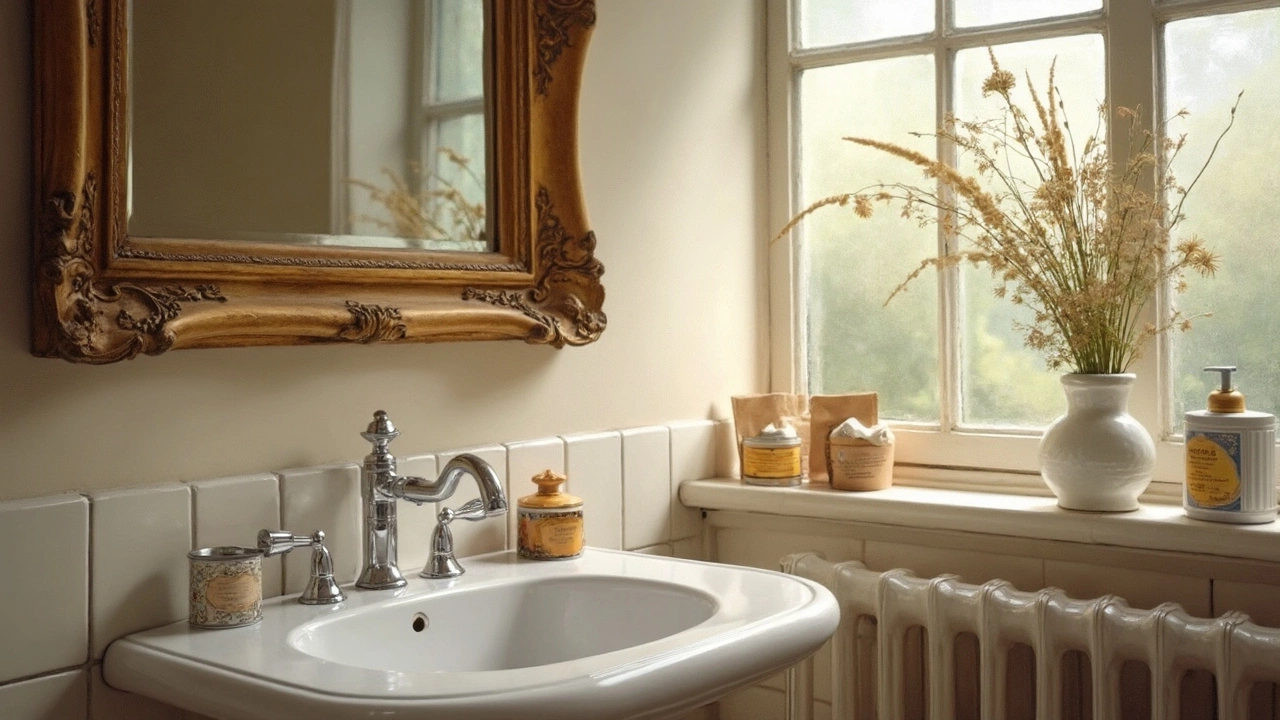
Imagine standing in front of your bathroom mirror, quickly fixing your hair before leaving the house. Ever wondered why your reflection seems perfectly normal in some mirrors but stretched or shrunken in others? Not all mirrors are created equal—and the difference lies in their shape.
Understanding the three main types of mirrors—plane, concave, and convex—can actually save you time (and maybe a little frustration). Whether you're redecorating, picking out a makeup mirror, or wondering why shop ceilings have those oddly curved mirrors, knowing how each type works makes life easier. You can even avoid those awkward moments when your makeup looks perfect at home but way off under another mirror elsewhere. Ready to see yourself (and the world) from a clearer angle? You’re about to unlock the real secrets behind mirrors.
- The Basics: What Makes a Mirror?
- Plane Mirrors: The Everyday Classic
- Concave Mirrors: Up Close and Focused
- Convex Mirrors: Wide Views and Safety
- Real-Life Uses: Where Each Type Shines
- Choosing the Right Mirror for Your Space
The Basics: What Makes a Mirror?
At first glance, a mirror just looks like a shiny sheet. But what really turns glass into a mirror? It's all about how it reflects light. Mirrors are made by coating a flat piece of glass—sometimes plastic—with a thin layer of metal, usually aluminum or silver. This metal layer is the magic part that bounces light right back, giving you a crisp, clear reflection.
There’s actually a quick breakdown of how modern mirrors are put together:
- Glass gives the mirror its strength and smoothness.
- A layer of metal (often silver or aluminum) is added to create the reflective surface.
- Paint or backing is applied to protect the metal from damage.
The history here is kind of wild—ancient mirrors were just polished stone, copper, or bronze. The big jump happened in the 1800s when people perfected the silvering process, making high-quality mirrors affordable for everyone.
Mirrors don’t send back all the light that hits them (about 90-95% with good glass), but that’s more than enough to trick your brain into believing you’re looking into another world. Here’s a quick table comparing common mirror coating materials and their reflectiveness:
| Material | Average Reflectiveness (%) | Common Use |
|---|---|---|
| Aluminum | 90-92 | Household, telescopes |
| Silver | 95-98 | High-end mirrors, science equipment |
| Tin/Mercury (Old) | ~70 | Antique mirrors |
When it comes to types of mirrors, the real difference is the shape of the reflective surface. This changes how the mirror bounces light, which totally changes what you see. Knowing this can help when picking the right types of mirrors for your space or project.
Plane Mirrors: The Everyday Classic
When you think about a regular mirror, you’re probably thinking of a plane mirror. These are just flat sheets of glass with a thin layer of metal—usually aluminum or silver—on the back to make them reflective. That’s it. No curves, no tricks. You see yourself as you actually look, just flipped left to right. Plane mirrors have been around for a long time, and the basic design hasn’t changed because it simply works.
Now, let’s talk facts. A plane mirror always forms a virtual image that’s the same size as the object in front of it and appears to be the same distance behind the mirror as you are in front of it. So, if you stand one meter from a bathroom mirror, your reflection seems like it’s one meter “inside” the mirror. That’s why things in these mirrors look totally natural—no stretching or shrinking.
Check out where you’ll run into plane mirrors in daily life:
- Bathroom and bedroom mirrors
- Dressing room mirrors in stores
- Wall mirrors for home décor
- Mirrored glass in elevators
- Makeup and shaving mirrors (unless they’re specifically labeled as magnifying)
Here’s a snapshot of what makes plane mirrors tick:
| Feature | Plane Mirror |
|---|---|
| Surface type | Flat |
| Image size | Same as object |
| Image orientation | Upright, left-right reversed |
| Main uses | Personal grooming, décor, safety |
| Real or virtual image? | Virtual |
Here’s a cool tip: if you want a mirror to make a small space look bigger, always go for a plane mirror. Designers use big wall mirrors in tight hallways or living rooms to bounce light around and create an illusion of more space. Don’t bother with a fancy curved mirror for that effect; just stick to the classic flat type.
Quick stat—about 90% of household mirrors sold each year in the US are plane mirrors. They’re just reliable, and you always know what you’re going to get when you stand in front of one. If you need an honest look at yourself (no surprises), this is the mirror you want.
Concave Mirrors: Up Close and Focused
Concave mirrors curve inward, a bit like the inside of a spoon. This shape lets them do something cool—they focus light to a single point. That’s why you’ll always spot concave mirrors in places where people need a close-up view or need to direct beams of light.
Here’s the science: When light hits a concave mirror, the angle and curve cause the rays to bounce inward. This can make things look bigger or even flip the image upside down if you stand farther away. It all depends on where you are compared to something called the focal point, the spot where all those light rays come together.
Doctors and dentists love concave mirrors for a strong reason. Dental mirrors give a zoomed-in, detailed look at your teeth and gums. Makeup artists swear by these mirrors too because they turn little details—like a stray eyebrow hair—into an easy target.
Want to see concave mirrors in action? Just check these common uses:
- Makeup mirrors (especially the ones that magnify your face)
- Flashlights (the bulb sits at the focal point, so the mirror beams light straight)
- Car headlights (creates a focused beam for night driving)
- Dentist’s circular mouth mirrors
- Solar cookers (using sunlight to cook by focusing it in one spot)
Here’s a quick comparison of how concave mirrors perform in different uses:
| Use | Effect | Benefit |
|---|---|---|
| Makeup mirror | Magnified, upright image | Helps with detail work |
| Car headlight | Parallel beam of light | Improves night visibility |
| Dentist tool | Zoomed, bright view | Easier oral checks |
| Solar cooker | Intense focus of sunlight | Fast heating |
Just a helpful tip: If your mirror shows your reflection upside down, take a step closer. You’re probably past the focal point! That’s one way to know you’re dealing with a concave mirror.

Convex Mirrors: Wide Views and Safety
If you’ve ever used the side mirrors on your car, you’ve definitely seen a convex mirror at work. These mirrors curve outward, kind of like the back of a spoon. Because of this shape, convex mirrors make things look smaller, but they let you see way more of what’s behind or around you. That’s why the message on your car mirror says, “Objects in mirror are closer than they appear.”
Convex mirrors are everywhere, not just on vehicles. Grocery stores use them up high so staff can keep an eye on every aisle. Convex mirrors help drivers spot blind spots, help store owners prevent shoplifting, and even make parking lots safer by showing who’s coming around a corner. That extra-wide view is the whole point: you trade off a detailed, up-close look for seeing more around you.
Here’s a look at why convex mirrors matter for safety:
- Wider field of view compared to flat or concave mirrors.
- Images appear smaller, so you see more area but at lower detail.
- No image distortion at the edges—you get a clear sweep across a broad space.
- Used in situations where seeing as much as possible is more important than seeing detail up close.
Check out some real-world numbers:
| Location | Typical Size | Main Purpose |
|---|---|---|
| Vehicle side mirrors | 12-18 cm across | Blind spot reduction, safety |
| Store ceiling domes | Up to 60 cm wide | Wide area surveillance |
| Parking garage corners | 30-45 cm wide | Prevent collisions |
One neat trick: if you need to check a busy hallway or driveway, a convex mirror will give you a huge advantage over a regular mirror. They’re also super durable—most are made from shatterproof materials for public spaces.
When it comes to the types of mirrors you see every day, convex is all about more coverage and less risk. Next time you check your reflection at the grocery store or in your car, give a quick thanks to convex mirrors for keeping things safer and chaos-free.
Real-Life Uses: Where Each Type Shines
Mirrors aren’t just for checking your outfit or brushing your teeth. Each type has its own job, and you’ll see them everywhere once you start looking for them.
The classic plane mirror shows up in pretty much every home and office. Your bathroom, hallways, elevators, and gyms rely on plane mirrors to give a true, life-sized reflection. Makeup mirrors and dressing room mirrors also use this flat type so you can judge your appearance without distortion. Fun fact: Plane mirrors produce reversed left-right images, but not top-bottom, which is why your right hand looks like the left hand in your reflection.
Concave mirrors are a bit sneakier. If you’ve sat in a dentist’s chair, stared at a makeup magnifier, or noticed the shiny dish behind car headlights, you’ve seen a concave mirror in action. These mirrors curve inward, focusing light to a point. That’s useful for making things look bigger nearby, which is why they show up in shaving and cosmetic mirrors. Car headlights use concave mirrors to throw out a focused, brighter beam. Even solar cookers use large concave mirrors to focus sunlight.
Convex mirrors bulge out and are the go-to for safety and security. The wide angle lets you see more of a space, even if it’s around a corner or behind you. You’ll spot convex mirrors in convenience stores, warehouse aisles, and at busy intersections to help drivers peek around blind spots. They’re also those little passenger-side car mirrors stamped with ‘Objects in mirror are closer than they appear.’ The reason? Convex mirrors shrink the image, letting you see more traffic, which helps prevent accidents.
Check out where you’ll find each mirror type most often:
| Mirror Type | Common Uses | Key Purpose |
|---|---|---|
| Plane | Bathrooms, bedrooms, elevators, shops | True-to-size reflection |
| Concave | Makeup mirrors, headlights, telescopes, dentist tools | Magnify, focus light |
| Convex | Vehicles, security in stores, street corners | Wider view, safety |
When you’re choosing a mirror for a task—like applying makeup, driving, or checking a store aisle—think about what you want to see: details, a full scene, or the most accurate reality. Picking the right type makes all the difference.
Choosing the Right Mirror for Your Space
Picking the best mirror isn’t just about looks. The shape and type of mirror totally changes the vibe—plus, it affects what you actually see. Before you grab any random mirror off the shelf, think about what you want it to do and where it’s going to live.
Here’s a quick breakdown of where each kind shines and what you should consider:
- Plane mirrors are your go-to for most rooms. They show a true reflection, so whatever you see in them is pretty much what everyone else sees. They’re perfect for bathrooms, bedrooms, and anywhere you want to check your hair or outfit.
- Concave mirrors bring things closer and magnify detail. If you love doing makeup or need a close shave, these are a game-changer. You’ll usually find them in makeup mirrors or some fancy bathroom setups. Just don’t use them where you want a normal view—your reflection might look a bit wild from too far away.
- Convex mirrors make spaces look bigger and let you see more of a room at once. They’re common in stores (for security) or driveways and garages to help with blind spots. The reflection is smaller but much wider, so you can spot trouble before it sneaks up on you.
Don’t forget practical stuff: think about the size, how much wall space you’ve got, and lighting. A giant mirror in a tiny room can actually make the space look massive, but too many mirrors can get confusing or overwhelming.
| Mirror Type | Best For | Typical Size | Common Locations |
|---|---|---|---|
| Plane | Daily grooming, decorating | Small to full wall | Bathroom, bedroom, hallway |
| Concave | Magnifying, detail work | Handheld, vanity-size | Makeup table, specialty bathrooms |
| Convex | Safety, wide view | Small to medium (often circular) | Stores, driveways, parking garages |
A good tip: If you’re tight on space or want to brighten up a room, placing a large plane mirror across from a window bounces natural light and makes the whole place feel open. Just be careful not to angle mirrors to accidentally shine sunlight where you don’t want it (nobody likes a surprise spotlight in the morning).
The bottom line—match the mirror type to your needs. Function first, looks second. Your future self will thank you every time you use the right mirror for the job.

